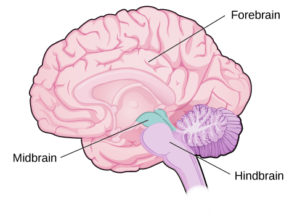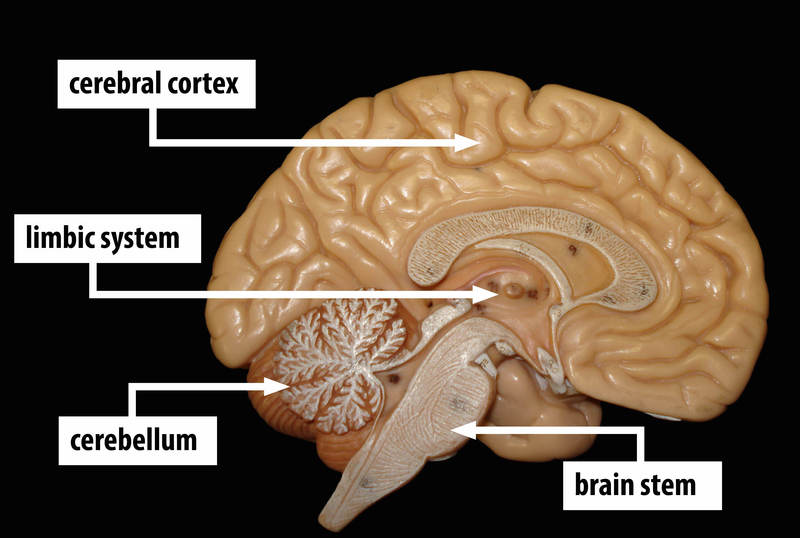- Identify the location and function of the lobes of the brain
- Describe the functions of the midbrain and hindbrain
- Describe the function of the parts of the limbic system
The Central Nervous System: Looking at the Brain as a Whole
The brain is the largest single part of the central nervous system. It is here that most of your sensing, perception, thinking, awareness, emotions, and planning take place.
Even though the brain makes up only about 2% of your body weight, it uses nearly 20% of your body’s oxygen and energy—a reflection of how constantly active it is.
Sections of the Brain

Scientists often organize the brain into major parts based on location and function. One common approach divides it into three main regions:
- Forebrain – responsible for complex thought, emotion, memory, and reasoning
- Midbrain – involved in movement, sensory processing, and reflexes
- Hindbrain – controls vital functions like breathing, balance, and coordination
Another useful way to describe the brain’s structure is to look at its major components:
- The cerebrum (cerebral cortex) – the largest part, responsible for higher thought and perception
- The cerebellum (at the back) – coordinates movement and balance
- The brain stem (even further back)– connects the brain to the spinal cord and regulates basic life functions
- The limbic system (an area that is less regionally defined in the center of the brain) – a network involved in emotion, motivation, memory, and smell

We’ll start by looking at the big part—the forebrain.
Forebrain Structures
the forebrain

The forebrain is the largest part of the brain. The forebrain contains the cerebral cortex and a number of other structures that lie beneath the cortex (called subcortical structures). This is the largest part of the brain you might typically think of if asked to picture the brain.
The cerebral cortex (also called the cerebrum) is the “newest,” most advanced portion of the brain associated with higher-level processes such as consciousness, thought, emotion, reasoning, language, and memory.
The surface of the brain is characterized by a distinctive pattern of folds or bumps, known as gyri (singular: gyrus), and grooves, known as sulci (singular: sulcus). The most prominent sulcus, known as the longitudinal fissure, is the deep groove that separates the brain into two halves or hemispheres: the left hemisphere and the right hemisphere.
These two hemispheres are connected to one another by a thick bundle of axons called the corpus callosum.